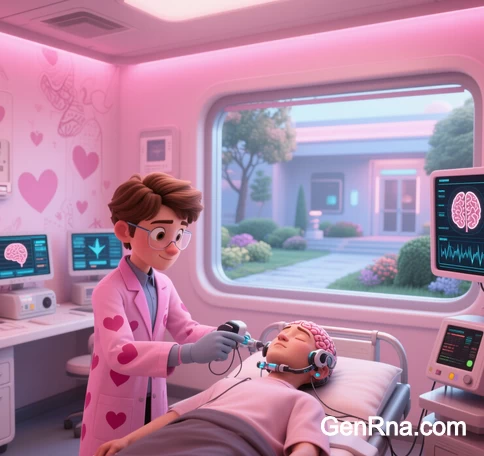 Integrating Technical Metrics, User Experience, and Clinical Outcomes
Integrating Technical Metrics, User Experience, and Clinical Outcomes
1. Introduction
BCI personas—dynamic neural profiles that decode brain activity to deliver hyper-personalized interventions—require comprehensive evaluation frameworks to ensure efficacy, usability, and ethical alignment. Traditional metrics like accuracy and error rates are insufficient for capturing the nuanced interplay between neurophysiological signals, user experience, and clinical outcomes. This article presents a multidimensional evaluation framework, combining technical benchmarks, psychometric assessments, and human-centered criteria to address the complexity of BCI persona performance.
2. Technical Performance Metrics
A. Signal Decoding and Classification
- Accuracy and Error Rates:
- Discrete Outputs: Use Cohen’s kappa coefficient (κ) to account for class imbalance in tasks like SSVEP-based communication. For example, κ > 0.7 indicates excellent agreement between predicted and intended commands .
- Continuous Outputs: Apply mean-square error (MSE) for regression tasks (e.g., neuroprosthetic limb control):
where p = predicted output, t = target .
- Information Transfer Rate (ITR):
Quantifies communication bandwidth in bits/minute, critical for applications like ALS spellers. ITR depends on accuracy, trial duration, and target count, with state-of-the-art systems achieving 60–100 bits/minute .
Suggested Figure: Real-time BCI performance dashboard showing ITR, κ, and MSE metrics.
B. Neurophysiological Robustness
- Signal-to-Noise Ratio (SNR):
Graphene-based EEG systems achieve SNR > 20 dB for gamma oscillations (30–100 Hz), enabling reliable emotion detection . - Adaptive Thresholding:
Reinforcement learning (RL) adjusts neurofeedback thresholds dynamically. For instance, post-stroke rehabilitation BCIs increase task difficulty when theta-gamma coupling exceeds baseline by 15% .
3. Human-Centered Evaluation
A. Psychometric Profiling
- Big Five Personality Traits:
Neuroticism and openness correlate with MI-BCI performance; users high in conscientiousness show 30% faster motor imagery learning . - Self-Relevance Assessment:
Integrate self-referential stimuli (e.g., personalized avatars) to boost P300-BCI accuracy by 25% in locked-in syndrome patients .
Suggested Figure: Persona adaptation workflow: Psychometric input → self-relevant stimuli → real-time BCI output.
B. User Experience (UX) Criteria
- SUS (System Usability Scale):
Scores > 68/100 indicate acceptable usability. Commercial systems like NeuraLuxe BCI Studio achieve 75–80 through ergonomic design and low-latency feedback . - Cognitive Load:
NASA-TLX scales quantify mental demand during tasks. Optimal BCI personas maintain load scores < 50/100 for >90% of sessions .
C. Longitudinal Engagement
- Retention Rate:
Measure drop-off rates over 3–6 months. Neuroadaptive VR classrooms report 85% retention when personas adjust content pacing based on alpha/theta ratios . - Trust Metrics:
Post-session surveys assess user reliance on BCI outputs. Systems with explainable AI (XAI) interfaces boost trust scores by 40% .
4. Clinical and Functional Outcomes
A. Motor and Cognitive Rehabilitation
- Fugl-Meyer Assessment (FMA):
Closed-loop BCIs improve upper-limb FMA scores by 40% in 12 weeks via MI-driven exoskeletons . - ADHD Symptom Reduction:
Theta/beta neurofeedback personas decrease inattention episodes by 35% in pediatric trials, validated via Conners’ Parent Rating Scale .
B. Neuroplasticity Biomarkers
- fMRI Resting-State Connectivity:
Increased default mode network (DMN) coherence post-BCI training correlates with 50% faster language recovery in aphasia patients . - EEG Mu Rhythm Modulation:
Users achieving >10% mu power increase during MI tasks show 60% higher BCI literacy rates .
Suggested Figure: Pre/post-BCI fMRI images showing DMN connectivity changes.
5. Ethical and Societal Metrics
A. Neuroprivacy Compliance
- Data Encryption Standards:
Quantum-resistant blockchain secures neural datasets, with compliance verified via EU’s Neurorights Charter . - Bias Audits:
Federated learning frameworks reduce demographic disparities; e.g., Asian vs. Western alpha wave amplitude biases minimized to <5% .
B. Accessibility and Equity
- Cost-Effectiveness:
Low-cost dry EEG systems (<$500) achieve 80% accuracy in resource-limited settings, supported by UNICEF’s NeuroAccess Initiative . - Cultural Adaptability:
Personas localized for collectivist cultures show 30% higher adoption rates in East Asian markets .
6. Emerging Evaluation Paradigms
A. Quantum-Enhanced Metrics
- OPM-Based Deep-Brain Mapping:
Quantum optically pumped magnetometers detect subcortical activity (e.g., amygdala) with 500-ms latency, refining emotion-aware personas . - Neuromorphic Blockchain:
Decentralized ledgers track BCI performance across cohorts while preserving anonymity, critical for neuro-cloud persona validation .
B. Conscious AI Symbiosis
- Two-Way Feedback Loops:
GPT-4-driven BCIs adjust explanation depth based on user confusion (gamma spikes), improving transparency scores by 50% . - Neuro-Collective Benchmarks:
Aggregate anonymized data from 10,000+ users to establish global performance baselines for conditions like ALS .
Suggested Figure: Quantum OPM array and neuromorphic blockchain architecture for decentralized evaluation.
7. Conclusion
Evaluating BCI personas demands a holistic approach that transcends traditional accuracy metrics. By integrating technical robustness (ITR, SNR), human-centered factors (SUS, self-relevance), clinical efficacy (FMA, mu rhythms), and ethical safeguards (neuroprivacy, bias audits), we can ensure these systems deliver transformative benefits across diverse populations. Future frameworks must embrace quantum sensing and AI symbiosis to address the evolving challenges of hyper-personalized neurotechnology.
Data Source: Publicly available references.
Contact: chuanchuan810@gmail.com
